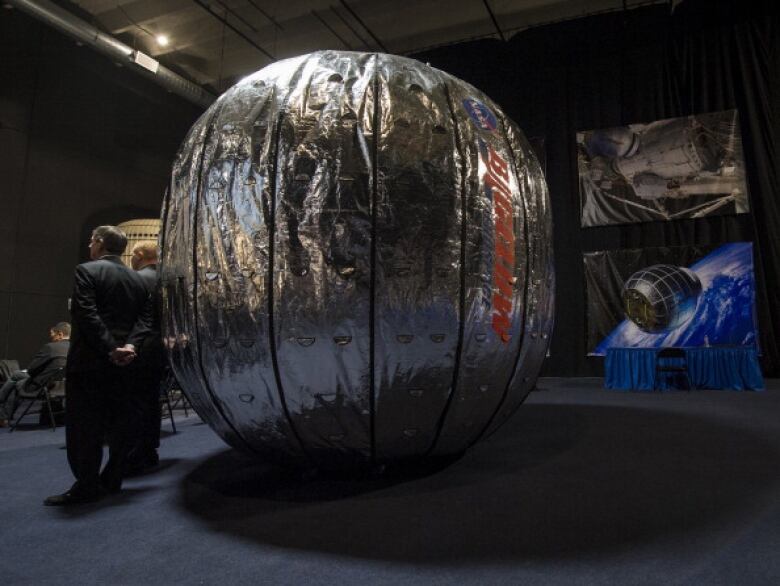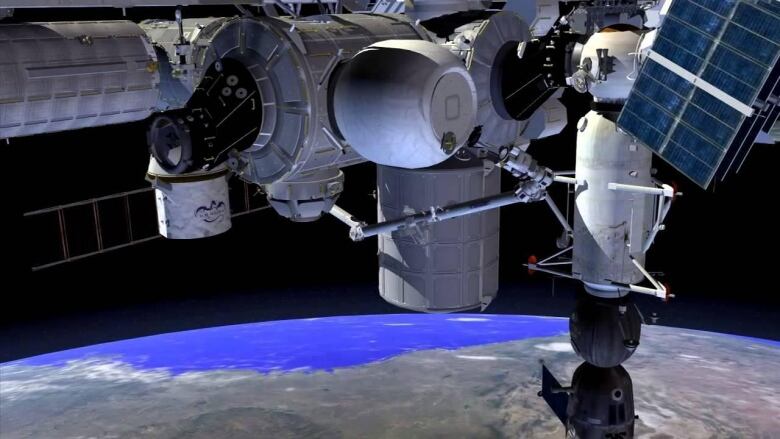NASA installs expandable 'BEAM' module on ISS
Lightweight, soft-sided habitat to be inflated in May
A NASA ground-control team on Saturday used a robot arm to unpack an expandable module and attach it to the International Space Station, setting the stage for a novel test of a habitat for astronauts, researchers and even tourists.
The 1,400-kg module, manufactured and owned by Bigelow Aerospace, was launched aboard a SpaceX Dragon cargo capsule that reached the station on Sunday.
The module was attached to the station at 5:36 am ET the station flew about 400 kilometres above Earth, the U.S. space agency said during a live broadcast on NASA TV.

The Bigelow Expandable Activity Module, or BEAM, is scheduled to be inflated with air in late May, beginning a two-year experiment to see how it holds up in the harsh environment of space.
Following the test period, the module will be jettisoned from the station, burning up on re-entry through Earth's atmosphere.
Made of impact-resistant, Kevlar-like materials and other fabrics, the lightweight habitats could save millions of dollars in launch costs compared with metal modules. They may also offer better radiation protection for astronauts, officials with NASA and Bigelow Aerospace said before the April 8 launch.
Bigelow, based in North Las Vegas, Nevada, tested two unmanned prototypes a decade ago, but BEAM is its first inflatable that will host astronauts.
Plans for much larger module
The company, owned by real estate billionaire Robert Bigelow, is working on operational modules 20 times larger than BEAM, which is about the size of a small bedroom.
Dubbed the B330, it is designed primarily to be free-floating habitat, but Bigelow is talking with NASA about attaching one to the space station. It would add about 12,000 cubic feet (339 cubic metres), or 30 per cent more space, to the outpost to support NASA and commercial projects.

The company is developing time-share agreements to lease space aboard the module to commercial entities, research organizations and the occasional space tourist.
"Our hope is that NASA would be the primary customer for that structure," Bigelow said at a press conference on Monday at the Space Symposium in Colorado Springs.
NASA is interested in expandable habitats to serve as crew living quarters during three-year trips to and from Mars.
BEAM's test run is intended to see how it withstands the temperature swings and high-radiation environment of space. Members of the station crew also will install sensors to monitor orbital debris and micrometeoroid impacts.
"This type of architecture has never been flown before," Bigelow told reporters before launch. "We're not 100 per cent sure of its behaviour. It is a testing station. That is the whole point here, in all respects," Bigelow said.
With files from CBC News













_(720p).jpg)


 OFFICIAL HD MUSIC VIDEO.jpg)
.jpg)



























































































